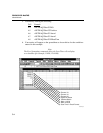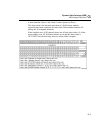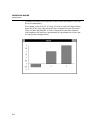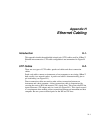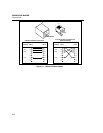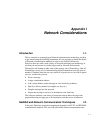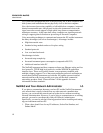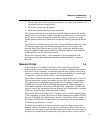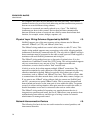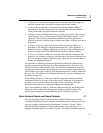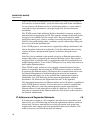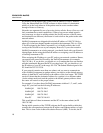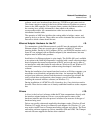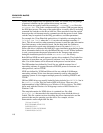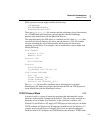
2640A/2645A NetDAQ
Users Manual
I-4
the computers and other devices attached to the network wiring. The Ethernet
standard consists of a set of low-level addressing and data transmission protocols
that run on several different wiring schemes.
Computers on a network are usually referred to as a “host.” The NetDAQ
instruments are hosts in this context. Devices that facilitate communication
between different sections of a network are called by names that indicate their
function, for example, routers, bridges, repeaters, etc.
Physical Layer Wiring Schemes Supported by NetDAQ I-5.
NetDAQ supports two of the most common wiring schemes used in Ethernet
networks: 10BaseT (or UTP), and 10Base2 (thin coax).
The 10Base2 wiring method uses coaxial cable (similar to cable TV wire). This
simple wiring method supports many connections to the cable, allowing multiple
instruments to be directly connected to the PC. The only trick to 10Base2 wiring is
that a terminator must be connected to the cable at each open end. Fluke supplies a
terminator with each NetDAQ instrument and wiring kit.
The 10BaseT wiring method uses two or four pairs of twisted wires. It is also
referred to as Unshielded Twisted Pair (UTP) wiring. This wiring method supports
only two connections to any one run of wire. To support more than two
connections, an active device called a "hub" must be used.
A hub is an active device that supports multiple 10BaseT connections. The
network host attached to each connection of the hub may communicate with every
other host attached to the hub. Hubs also typically allow other types of cable
connections, such as 10Base2 and 10Base5 (fat coax). This is done to allow a hub
to communicate with other network hosts, such as other hubs, routers, bridges, etc.
If you want to use 10BaseT wiring without a hub (to connect one NetDAQ and
one PC), you must use a special 10BaseT cable. This is necessary because both
hosts transmit and receive on the same pair of wires within the cable. To operate
correctly in a direct wiring situation, these pairs must be crossed in the cable, so
that the transmitter on one end is connected to the receiver on the other.
The 10BaseT wiring method is becoming very popular because the wire is
inexpensive to purchase and install, the use of a hub allows some protection from
malfunctioning network hosts, and this type of wiring is easier for network
administrators to manage and control.
Network Interconnection Devices I-6.
The following five basic devices are used in networks to extend, partition, and
interconnect networks:



